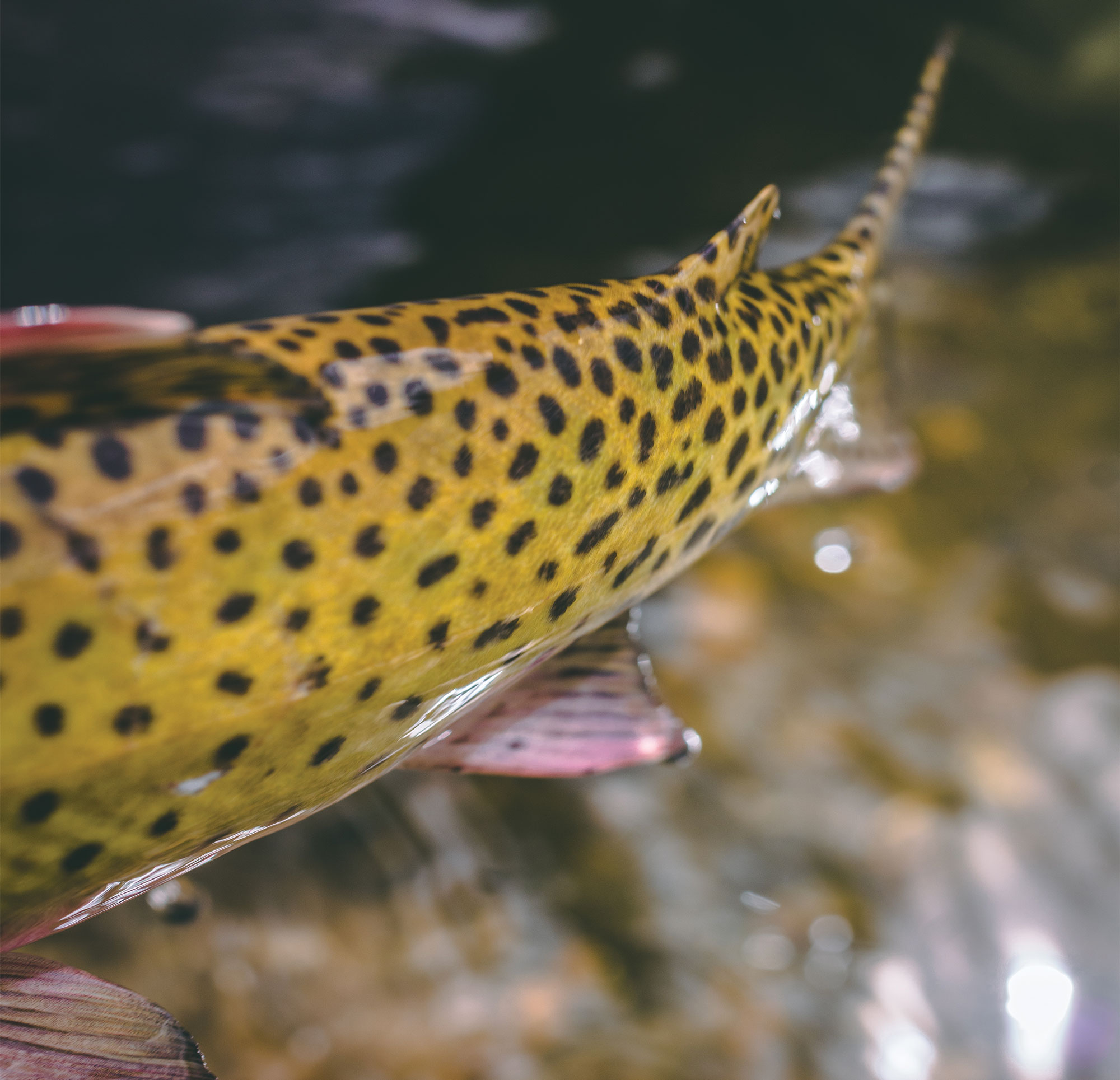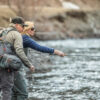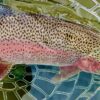““One brisk morning spent fishing on a misty lake can bring home to a child the beauty, drama and fragility of our national heritage in a way a thousand classroom presentations never could.” – George H.W. Bush.
School is back in session. But rest assured, lessons of beauty, drama, and fragility can happen on a misty lake, stream side, or in a classroom. Once a child takes a rod or book in hand and is no longer a passive recipient of information but an architect of possibilities, that is when a lifetime of learning begins. Our national heritage depends on it.
Silver Creek
This is a great time to fish the Creek, as most of the heavy summer traffic has diminished during the week. Weekends can still be a tad busy. While there is still some late morning action with Tricos and Baetis, the real action typically shifts to the Callibaetis in the afternoon. This bug is smaller than the early season Callibaetis, so you will need to have plenty of size 18 and 20s in all phases of this insect’s life cycle (nymphs, emergers, duns and spinners). To find the Callibaetis, search the sloughs and slow water stretches of the upper and lower Kilpatrick’s Pond. The fly is easily identified by its rhythmic bouncing just above the water as it prepares to lay its eggs. On windy days, try a size 16 or 18 Hackle Stackers along with a Quigley Cripple or the Callibaetis Floating Nymph. When the water is still, try Harrop’s Partridge Spinner or Harrop’s Cutwing Dun in a size 18. Also watch the weather forecast over the next few weeks as cloudy, cool days will trigger fantastic Baetis hatches. These Baetis are small and you will need patterns in size 20, 22, and 24 to match the hatch. For this bug, size is more important than color and fish should take any well presented fly. Also, be prepared for some Mahogany Duns as they will make an appearance in the coming weeks.
The Big Wood
It is hard to beat September on the Wood. For the best results, seek out water that has not received a ton of fishing pressure. A short walk away from the easy access points will get you into fresh water. Also, it is important that you approach the river’s edge with caution and scan for feeders in the shallows. Often the largest fish hold in the least likely water and these fish can be spooky. For dries, try small parachutes (18) with orange posts which show up nicely in the glare and light chop of the riffles. Also, Red Quills may start to make their annual appearance so be sure to have a few handy. Right now, terrestrials have been a good bet, especially hoppers and flying ants. Trailing a small size 16 or 18 nymph can also be effective during slow periods. Also, Euro Nymphing is a great way to turn those missed takes into hookups.
Warm Springs and Trail Creek
Though they be but little, they are fun to fish. And if you can master a small creek, you will find the lessons carry over to the larger streams. Look for piles of stocked fish around the bridges and wild fish on the path less taken.
Salmon River
The water is low and crystal clear making for fantastic afternoon dry fly action on both the upper and lower river. For dries try an assortment of attractors in size 12 through 16. Also, size 12 tan or olive Elk Hair Caddis work well to imitate the Spruce Moths along the banks of wooded water. Nymphing fishing is your best option if you are looking for continual action. For nymphs, try standard bead heads in size 14 and 16.
South Fork of the Boise
Typically the flows drop dramatically on the South Fork this time of year; however, the flows remain high which is good for those utilizing a drift boat, but not wade fishermen. Now that the flows have stabilized the fishing is following suit. Hoppers have been turning fish, but the main action is in the afternoon on Pink Alberts. You will need to scan the water carefully looking for this bug and any fish feeding on it. Be sure to have both dun and emerger patterns to fool these picky fish. Nymphing can fill in the periods before and after the Pink hatch; try large rubber leg stone flies, caddis, and midge patterns.
Upper Lost Drainage
With cooler temps up high, the fishing is best during the middle of the day. The main stem continues to produce some fantastic fish. The song remains the same…if you cover lots of water and you capitalize on the takes you get, you will have a lovely day.
The Lost Below Mackay
The flows are steady at 400 CFS. Wade with caution. Expect the Trico and Baetis hatches to remain strong. Take a good number of House of Harrop Baetis and Tricos in size 20 to 24. Nymphing is always effective; sight nymphing with a single small Pheasant Tail, Zebra midge, or Baetis nymph can be challenging and fun. Standard dry dropper rigs or Euro Style techniques are also very effective. You might try dancing a large crane fly pattern; we have a great selection of Mackay Specials.
Local Ponds
All the ponds have been stocked as we head into the last month of summer. Drop on by before you take your family fishing and we will make sure you have the right gear to be successful.
South Fork of the Boise: Pink Alberts | Chubby Chernobyl | Iron Lotus | SRS Bullet French Nymph | Duracell Jig 12-18 | Jake’s Perdigon 14-18 | Tungsten Nemec Stone | Pat’s Rubber Legs | Stone Daddy 8 | Bishop’s Dynamite | DB Zebra Midge in black, red, or olive | King Prince
Silver Creek: Tricos | PMD | Callibaetis | Baetis | Griffiths Gnats | Parachute Midge | Iron Lotus | SRS Bullet French Nymph | Jake’s Perdigon 14-18 | DB Zebra Midge in black, red, or olive
Big Lost, Big Wood and Tributaries: Tricos | Beatis | Purple Haze | Elk Hair Caddis | Golden Stone | Pats Rubber Legs | Buggers | Chubby Chernobyl’s | Bishop’s Dynamite | SRS Bullet French Nymph | Jake’s Perdigon | King Prince Nymph | Zebra Midge
| Silver Creek Big Wood The Big Lost South Fork of the Boise Salmon River |
148 cfs 252 cfs 421 cfs 1150 cfs 784 cfs |




